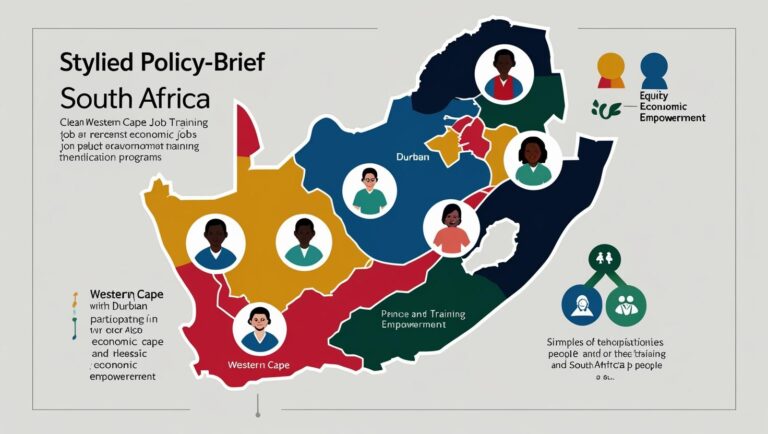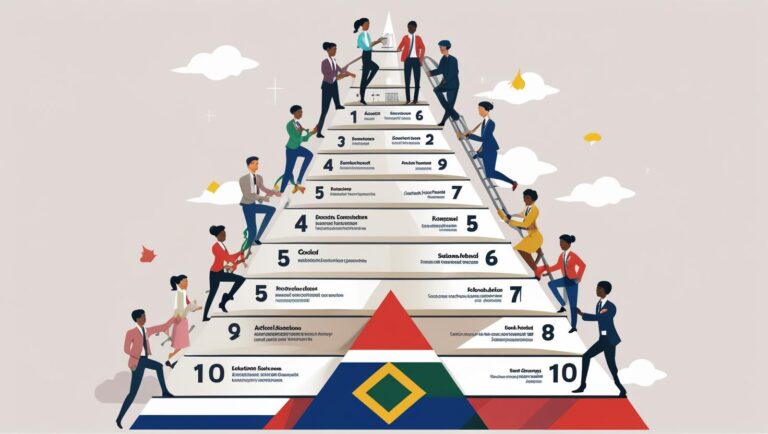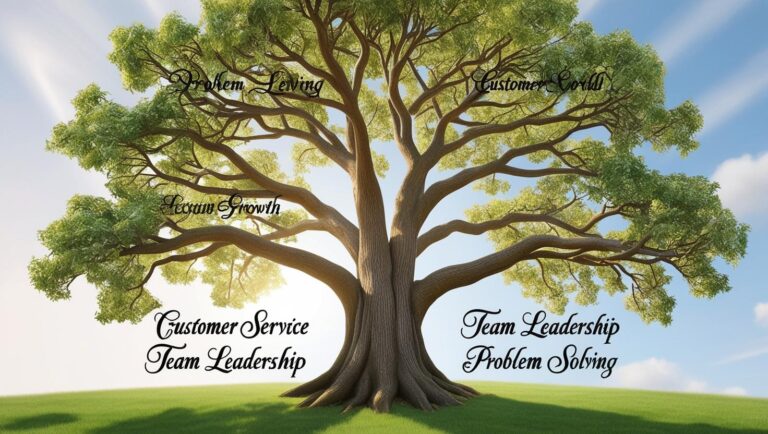NQF-Aligned Job Design and Learning Pathways: Unlocking Workforce Potential in South Africa
Introduction
In South Africa, most HR teams are familiar with the National Qualifications Framework (NQF), but few truly use it as a strategic tool in daily workforce planning. This often leads to a mismatch between job responsibilities, promotions, and learning interventions. When job roles are over- or under-scoped, employees may struggle, development budgets can be wasted, and organisational performance suffers.
Using the NQF as a foundation allows HR teams to create jobs and learning pathways that are fair, competency-based, and growth-oriented. It’s more than compliance—it’s about building internal capability, unlocking talent potential, and driving long-term productivity. This article will guide you through the practical steps of aligning jobs and learning programs with the NQF, complete with examples and strategies relevant to South African workplaces.
Why the NQF Matters
The NQF is more than an academic classification system. It provides a national standard for comparing skills, learning, and experience across formal education, workplace learning, and informal skill acquisition. Administered by the South African Qualifications Authority (SAQA), the NQF allows organisations to:
Understand what a person knows and can do
Determine the level of responsibility and autonomy a role requires
Plan structured learning journeys from entry-level to expert-level capabilities
Proper use of the NQF ensures that employees are placed into roles matching their competency, training is relevant, and career progression is structured and equitable.
Understanding the 10 NQF Levels
The NQF is structured into 10 levels, each representing a combination of knowledge, skills, and work ability:
Level 1–3: Basic literacy, workplace readiness, and life skills. Suitable for entry-level operational roles.
Level 4: Matric or NSC equivalence. Ideal for administrative, operations, or customer service roles.
Level 5: Higher Certificate. Supports supervisory responsibilities, report writing, and frontline management.
Level 6: Diploma or Advanced Certificate. Applicable for specialist roles, technical analysis, and coaching responsibilities.
Level 7: Bachelor’s Degree. Roles requiring strategic thinking, complex problem-solving, and team leadership.
Level 8: Honours or Postgraduate Diploma. Cross-functional oversight, policy development, and departmental strategy.
Level 9: Master’s Degree. Senior leadership, innovation, and high-stakes decision-making.
Level 10: Doctorate. Expert-level research, thought leadership, and organisational strategy.
Key Insight: NQF levels measure more than academic qualifications—they indicate the real-world ability to perform tasks and make decisions. Employees may operate at higher levels than their formal qualifications suggest, but recognising this requires proper assessment.
Using NQF in Job Design
Job descriptions often use vague statements such as “must be strategic” or “good communication skills.” Without context, managers and employees struggle to understand expectations. Aligning job design with NQF levels adds clarity and ensures fair performance evaluation.
Start With the NQF Level
The first step in NQF-aligned job design is determining the level of autonomy, responsibility, and problem-solving the role requires. Ask:
What decisions will this person make independently?
How complex are the tasks involved?
What level of critical thinking is expected?
Use NQF-Aligned Language
Describing tasks using NQF-aligned terminology ensures clarity and sets realistic expectations. For example:
Level 3 (Basic): “Carry out routine clerical tasks following detailed instructions.”
Level 5 (Supervisory): “Allocate tasks to team members, monitor output, and compile performance reports.”
Level 7 (Managerial): “Lead multi-disciplinary teams and formulate operational strategies.”
Level 9 (Executive): “Design and implement organisational innovations and high-level policy decisions.”
Link Job Design to Development
The gap between an employee’s current capability and the job’s NQF level provides a roadmap for learning. For instance, a new HR clerk operating at Level 4 may require structured mentorship and certificate-level training to progress to Level 5.
Developing Learning Pathways That Make Sense
Learning pathways provide structured routes for employees to grow in skill, responsibility, and qualifications. Aligning these pathways with NQF levels ensures employees are trained for roles they can realistically perform and progress toward.
Example: Admin to HR Specialist Pathway
| Role | NQF Level | Required Learning |
|---|---|---|
| Receptionist | 3–4 | Communication, office tech |
| HR Clerk | 4–5 | Record keeping, compliance basics |
| HR Assistant | 5 | HR Certificate, SAP knowledge |
| HR Officer | 6 | Advanced diploma, counselling basics |
| HR Specialist | 7 | BCom HR, strategic insights |
This approach builds internal promotion ladders, aligns with SETA funding, and supports equity objectives.
Integrating Competency-Based Assessment
Qualifications alone don’t capture all workplace capabilities. Competency-based assessments evaluate real skills and performance.
Assessment can include:
Technical skills: Proficiency in software, processes, or equipment.
Soft skills: Problem-solving, leadership, and communication.
Job outputs: Quality of reports, projects completed, or team outcomes.
Best practice is to create role-specific rubrics aligned to NQF language. These rubrics guide promotions, learnership placements, and Recognition of Prior Learning (RPL).
Performance Reviews That Reflect Learning
NQF-aligned performance reviews go beyond generic KPIs. They allow managers to assess:
Cognitive complexity and autonomy
Skills gaps relevant to next-level development
Training requirements to bridge gaps
Examples of performance expectations:
Level 4: Respond to client queries using scripted guidance.
Level 6: Develop data-driven recommendations to improve service delivery.
Level 8: Design, test, and evaluate new processes across departments.
This ensures performance measurement supports growth, not just compliance.
Learnerships and Internships: Getting Them Right
Many organisations offer learnerships or internships without linking roles to NQF levels. Misalignment leads to poor learning and disengagement.
Fix this by:
Matching the NQF level of the learnership to the role’s complexity
Assigning mentors one level above the learner
Using workplace tasks as formative assessments
Example: A Level 5 HR Certificate learnership should provide exposure to policy, interviews, and systems, not just filing duties.
EE and Workforce Planning Considerations
Equity isn’t only about race or gender. Age and educational background also matter. Many South Africans aged 35–55 have years of experience but lack formal qualifications. Using NQF and RPL frameworks allows organisations to:
Create bridging programs
Recognise modular skills and prior learning
Progress employees into Level 5–6 qualifications without full-time schooling
This strengthens succession planning while advancing equity and productivity goals.
Using Data and Workforce Heatmaps
HR analytics often track turnover, promotions, and absenteeism, but seldom by NQF level. A workforce heatmap showing:
Current employees by role and NQF level
Gaps between job level and competency
Training investment per NQF band
Pipeline risks for Levels 6–8
…provides actionable insights, enabling strategic workforce planning rather than reactive decisions.
Conclusion
The NQF is more than a compliance tool—it’s a strategic asset for workforce planning, job design, and learning pathways. Aligning roles, development programs, and performance management with NQF levels:
Recognises real capability
Offers structured career growth
Unlocks funding opportunities
Supports equity and succession planning
Drives long-term productivity and engagement
In a country where formal education and workplace opportunity often don’t match, using the NQF strategically bridges the gap, turning HR from administrative to transformational.



